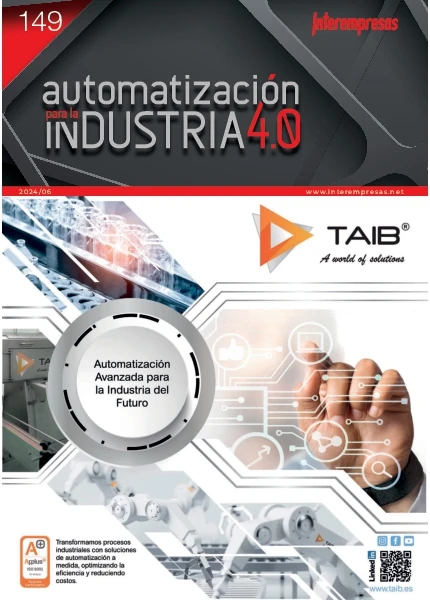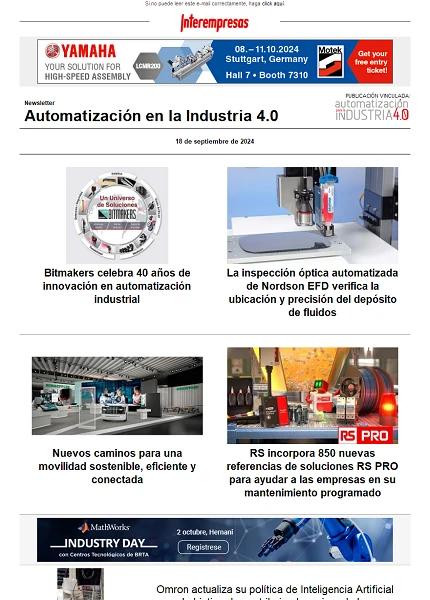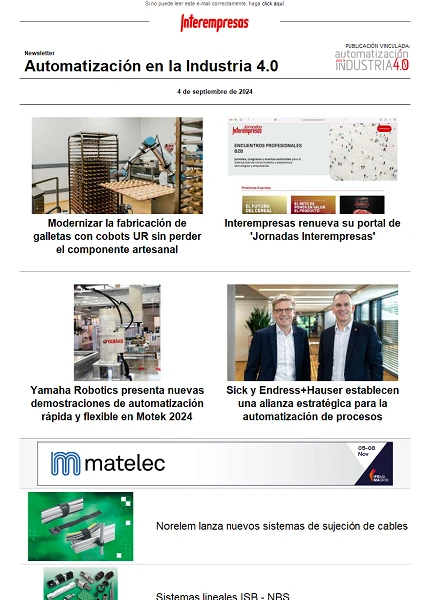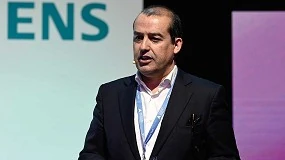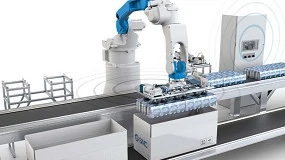Nueva técnica de nanoimagen para estudiar la estructura y conductividad de los cables
Científicos del Centro de Investigación Cooperativa nanoGUNE e IK4-Cidetec, ambos en San Sebastián (Guipúzcoa), han presentado en Nature Communications la ‘nanoscopía infrarroja-electrónica correlativa’, un nuevo método de toma de nanoimágenes que permite entender mejor la relación entre estructura local, conductividad y composición química de nanocables de óxido de zinc.
Para ello el equipo ha combinado la denominada s-SNOM —toma de imágenes y espectroscopía infrarroja con una resolución espacial de menos de 20 nm para producir ‘mapas’ de composición química y conductividad—, junto al microscopio electrónico de transmisión (TEM), que facilita información estructural con resolución atómica.
“Hemos desarrollado una preparación de muestras especial que permite combinar estas dos técnicas en una única muestra”, explica Andrey Chuvilin, investigador de nanoGUNE. “Y, como demostramos en nuestro estudio, la correlación entre las imágenes tomadas con TEM y con s-SNOM ayudará a obtener un conocimiento más profundo de las propiedades de los materiales a escala nanométrica”, añade Johannes Stiegler, del mismo centro.
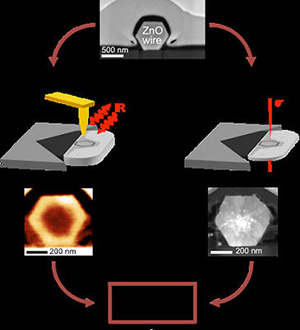
Para comprobar las posibilidades que ofrece la nanoscopía, los investigadores han estudiado secciones transversales de nanohilos de óxido de zinc (ZnO). Estos componentes presentan un gran potencial para ser utilizados en el transporte de electrones en diferentes ámbitos, como las placas solares, sensores emisores de luz y nanogeneradores piezoeléctricos. Sin embargo, hasta ahora se conocen pocos aspectos sobre la conductividad local dentro de estos ‘cables’.
Observando las imágenes infrarrojas de s-SNOM los investigadores han encontrado un perfil de conductividad radial, pero su origen y propiedades se explica con la ayuda de un TEM. Las regiones de poca conductividad del ‘cable’ de ZnO muestran defectos cristalinos significantes. A partir de las dos imágenes se puede concluir que se da una correlación inversa entre la densidad de los defectos y la concentración de portadores libres (conductividad).
Nuevas posibilidades
Ramón Tena-Zaera, director de la Unidad Fotovoltáica de IK4-Cidetec, explica que “esta nueva técnica permite, por primera vez, obtener toda esta información sobre una única muestra”. “Nuestros resultados abren nuevas posibilidades en el crecimiento y la integración de nanohilos de ZnO”.
Hasta ahora la comunidad científica se había centrado en obtener nanohilos con el menor diámetro posible porque consideraban que tenía mayor potencial. Por el contrario, los nuevos resultados sugieren que un crecimiento lateral —mayor diámetro— tiene más ventajas para conseguir materiales libres de defectos y de alta conductividad electrónica.
Aunque en este estudio se haya utilizado para una muestra especial, “el método de la nanoscopía infrarroja-electrónica correlativa tiene una aplicabilidad mucho más extensa —concluye Rainer Hillenbrand, líder del Grupo de Nanoóptica de nanoGUNE y coordinador del estudio—y tiene un gran potencial para estudiar nuevos materiales como el grafeno, aislantes topológicos, materiales de cambio de fase (PCM), o nanoestructuras biológicas y orgánicas”.
Referencia bibliográfica:
Stiegler J.M., Tena-Zaera R., Idigoras O., Chuvilin A. y Hillenbrand R. “Correlative infrared–electron nanoscopy reveals the local structure–conductivity relationship in zinc oxide nanowires”. Nature Communications 3:1131, 2012. Doi: 10.1038/ncomms2118.


